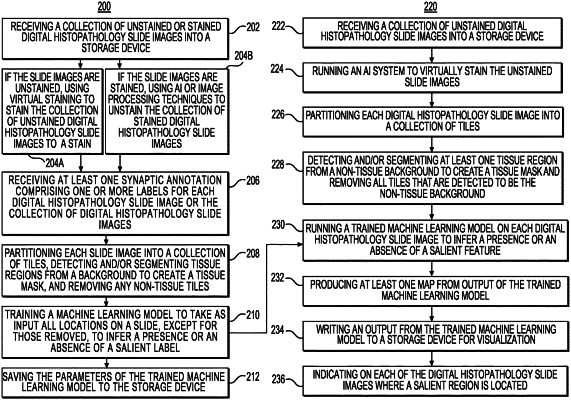| CPC G06T 7/0012 (2013.01) [G06N 3/045 (2023.01); G06T 11/001 (2013.01); G06V 10/7715 (2022.01); G16H 30/20 (2018.01); G06T 2207/30024 (2013.01)] | 20 Claims |

|
1. A computer-implemented method, comprising:
receiving a collection of unstained digital histopathology slide images;
providing one or more unstained digital histopathology slide images of the collection to a trained machine learning model to infer a presence or an absence of a salient feature,
the trained machine learning model having been trained by processing a second collection of unstained and/or stained digital histopathology slide images and at least one synoptic annotation for one or more unstained and/or stained digital histopathology slide images of the second collection, wherein the processing comprises:
virtually staining one or more unstained digital histopathology slide images of the second collection to a stain or using an image processing technique to un-stain one or more stained digital histopathology slide images of the second collection; and
training a machine learning model to take as input one or more locations on a slide image to infer a presence of a salient label;
determining at least one map based on an output of the trained machine learning model, wherein the at least one map produces detection regions; and
utilizing the at least one map, to determine where the salient feature is located, in one or more tests related to the collection of unstained digital histopathology slide images.
|